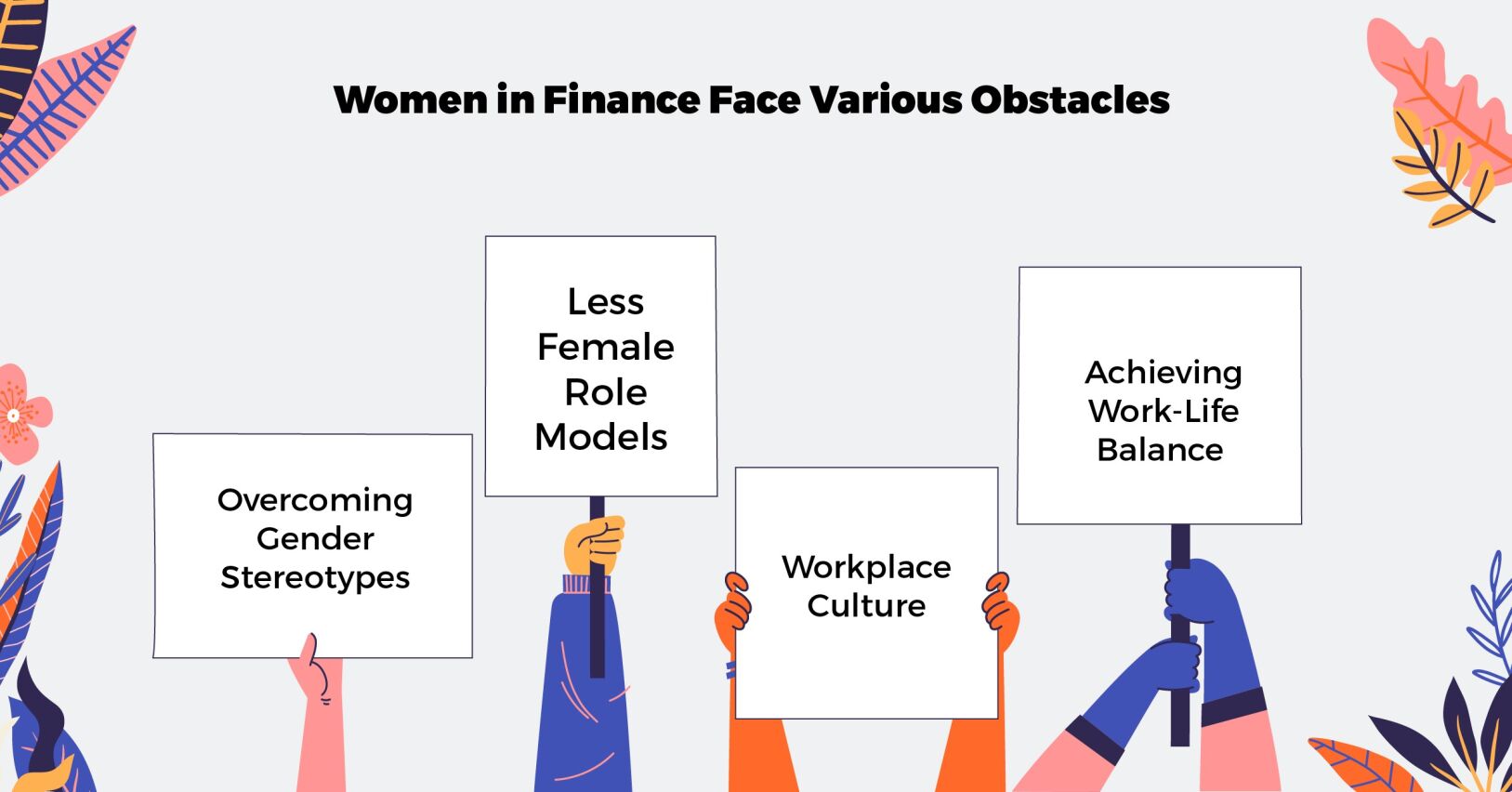The financial services industry, traditionally male-dominated, is rapidly evolving to foster greater diversity within its talent pool. Nevertheless, there is a gradual shift occurring. Women are progressing into leadership positions and redefining the landscape of the financial industry. In this blog, we’ll explore the emerging landscape of women in investment banking with a broader focus on the finance services industry (FSI).
Key Takeaways:
-
Women constitute 53 percent at entry level in banking but less than one-third of Senior Vice President (SVP) and Chief Executive Officer (C-suite) levels.
-
When disaggregated by role type:
-
Women held 33 percent of entry-level investing roles.
-
Women held 44 percent of entry-level operating roles.
- Women held 59 percent of entry-level non-investing roles.
-
Women are underrepresented at the managing director level (L2):
- Only 15 percent of managing-director-level investing roles are held by women.
-
Despite increased focus on Diversity, Equity, and Inclusion (DEI) initiatives, the proportion of women in leadership roles within financial services firms has modestly risen from 22 percent to 24 percent.
-
Projections indicate that by 2030, the proportion of women in leadership roles within financial services firms is expected to grow to 28 percent.

Women in Finance Face Various Obstacles
Women in investment banking, often find it challenging to continue their careers. In their investment banking career path, they face various challenges—
-
Overcoming Gender Stereotypes
Navigating the finance sector can be challenging for women as it is deeply rooted in gender stereotypes that hinder their career progression and leadership aspirations. These biases catalyze the misconception that women are unfit for high-stakes roles requiring decision-making and strategic thinking. Consequently, women need help in advancing their careers and are discouraged from pursuing finance careers altogether.
-
Less Female Role Models
The absence of strong female role models in finance contributes to gender inequality. Young women often struggle to envision themselves in leadership positions without visible examples of successful female leaders, leading to feelings of inadequacy and a lack of confidence. This absence of role models also impacts career aspirations, as women may hesitate to pursue ambitious goals in a male-dominated industry.
-
Workplace Culture
Finance being a highly male-dominated and competitive culture, often makes it challenging for women to feel valued and supported in their careers. This culture often leads to feelings of isolation hindering opportunities for career advancement for women.
-
Achieving Work-Life Balance
Balancing work and personal life can be particularly challenging in the demanding environment of the finance sector, where overcommitment is common and work is often prioritized over personal well-being. This can disproportionately affect women, who may have additional family responsibilities.
Empowering the Next Generation
Globally, women's representation in senior leadership and next-generation roles has shown slower growth compared to C-suite positions. If current trends persist, the proportion of women in senior leadership roles may stay stagnant. This underscores the significance of gender-equity initiatives and the necessity to establish a sustainable talent pipeline across organizations and regions.
Despite the challenges, the number of women in financial services attaining the highest levels of leadership, such as the C-suite and board positions, is increasing. In the past decade, more women have been appointed to FSI C-suites than men. According to Deloitte, currently, 18 percent of women hold C-suite positions globally. However, without a more concerted effort, the global growth in the share of women financial leaders may not even reach 25 percent by 2031.
Shifting Tides: Drivers of Change
Although investment banking is a male-dominated field, several female leaders have successfully navigated their investment banking careers and become the catalysts for change, inspiring many.
-
Lori Beer
The Global Chief Information Officer (CIO) at JPMorgan Chase & Co., Lori Beer is also a member of the operating committee. With oversight of the company's global IT infrastructure and systems, she manages a USD 14 billion budget and leads over 55,000 technicians across various operations. Beer's exceptional leadership has earned her recognition as one of Barron's Most Important Women in US Finance and American Banker's Most Powerful Women in Banking. She is even a recipient of the Women's Bond Club's Merit Award.
-
Mary Callahan Erdoes
Mary Callahan Erdoes, the CEO of Asset and Wealth Management at JPMorgan Chase & Co., oversees a division that thrives amidst challenging times in the banking industry. Following the 2007-2008 financial crisis, JPMorgan's blue-chip reputation for stability attracted wealthy clients seeking a secure investment environment. Similarly, during a recent period marked by regional bank failures, clients further bolstered the company's wealth management business by entrusting it with additional funds. Under Erdoes' leadership, JPMorgan's asset and wealth management division has capitalized on its reputation for stability and reliability to attract and retain affluent clientele during turbulent times in the banking industry.
-
Gina Nichols
Gina Nichols is the Chief Information Security Officer at Nymbus, a key player in modernizing financial services for banks and credit unions. With over 22 years of experience in various technical roles, Nichols brings a wealth of expertise to her position. She holds a Bachelor's degree in Computer Network Administration from St. Ambrose University and has held roles at companies like Stefanini TechTeam, John Deere, United Healthcare, and Fiserv before joining Nymbus in 2021 as a Senior Sales Engineer and subsequently rising to the role of CISO.
-
Thasunda Brown Duckett
The President and CEO of TIAA, Thasunda Brown Duckett is a prominent financial services company boasting assets under management totaling USD 1.3 trillion. With over 4.7 million individual customers and 12,000 institutional clients, TIAA is a major player in the industry. In her role, Duckett is dedicated to advancing TIAA's mission of helping Americans save adequately for retirement. Through her leadership, Duckett is intensifying efforts to promote retirement savings and financial security among TIAA's diverse clientele.
Necessary Organizational Changes
Women in finance often lack role models, which can hinder their career progression. To address this challenge, businesses and organizations play a crucial role in guiding women through various career steps.
Companies can facilitate this by developing formal sponsorship, mentorship, and buddy programs to connect junior and senior women professionals. These programs provide dedicated platforms for exchange and support, ultimately aiding in the retention of women in finance roles.
Additionally, unconscious biases among evaluators hinder women's advancement in finance. With a disproportionate number of men in senior positions, gender biases can affect performance evaluations and hinder career growth. To combat this, companies need to address gender imbalances in leadership positions, standardize pay grades, and ensure equal pay for equal work. By countering evaluator biases, companies demonstrate a commitment to fair treatment and create a more inclusive environment for women in finance.
Formal diversity programs alone are not enough to create lasting change. An adaptive and inclusive workplace culture is essential for sustaining diversity efforts over time. Companies can embed diversity into their culture by offering inclusive benefits such as parental leave and flexible working models for both men and women.
This not only discourages stereotypical perceptions but also supports employees in balancing their career and family commitments, ultimately promoting long-term employment and diversity in the workplace.
End Note
Leaders in the Financial Services Industry (FSI) have the chance to significantly impact the creation of a more equitable world. By taking proactive steps at the organizational level, they have the power to collectively alter the course of women's representation in leadership positions within financial services firms globally. Only through such intentional actions can we hope to achieve greater gender diversity in leadership roles.

